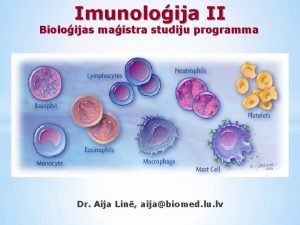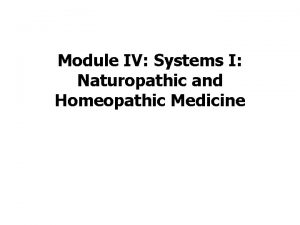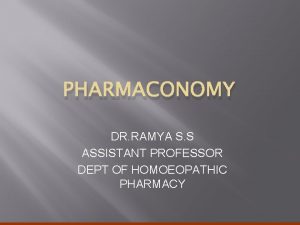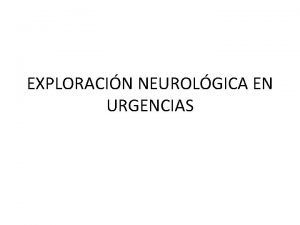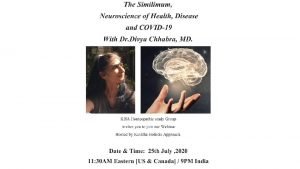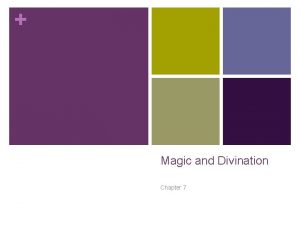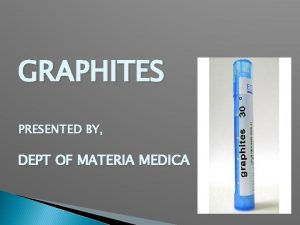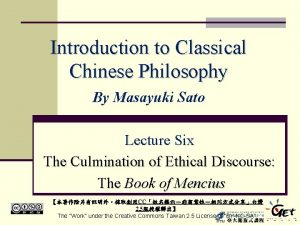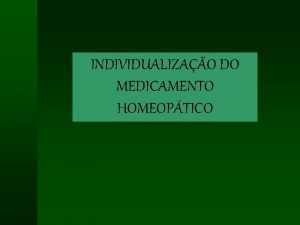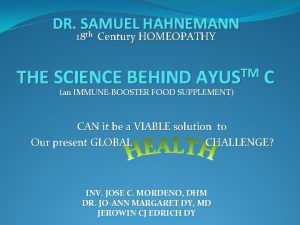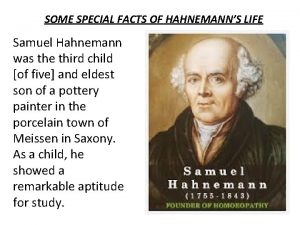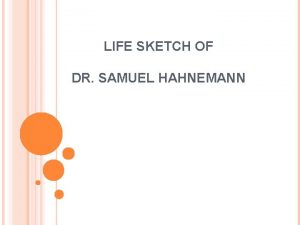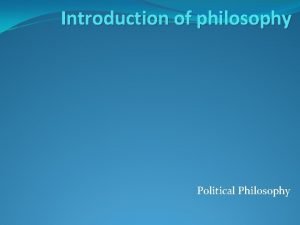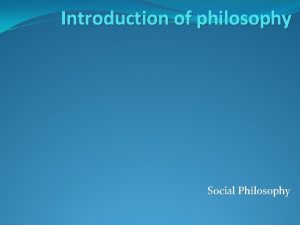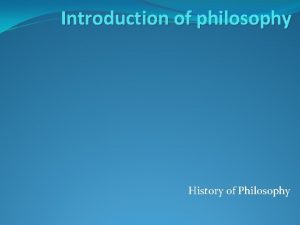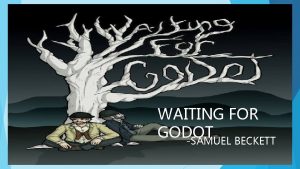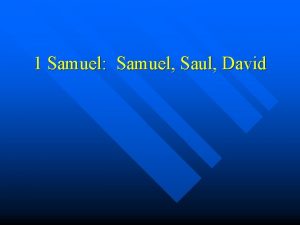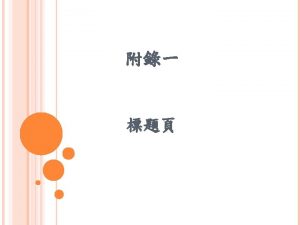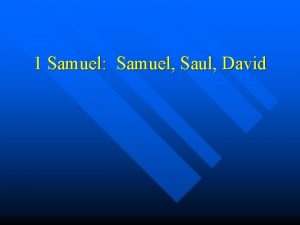Introduction to Homeopathic Philosophy Samuel Hahnemann 1755 1843












- Slides: 12

Introduction to Homeopathic Philosophy Samuel Hahnemann (1755 -1843)

• Born 10 th. April 1755 -1843 in Meissen in Saxony • Qualified as a doctor from Vienna in 1779 • Moved to Dresden in 1784 translating medical documents • In 1790 translate work by Dr W. Cullen • Quinine tree

• In 1791 His 7 th child was born and in 1792 he wrote his first critical report on the medical profession about the death of Leopold 2 nd of Austria • In 1796 he wrote Essay on a New Principle and theory of “Like cures like” • “Similia simiibus curentur” • Same year as Dr Jenner injects cow-pox for small pox

• In 1799 he consolidated and refine his work and moved to Hamburg • Out spoken against medical profession • In 1810 first published in Kothen Germany the original masterpiece The Organon and published five editions of the work during his lifetime and completed the 6 th edition in 1842 a year before he died. This was not published until 1921. The Organon was translated into English in 1893 by R. C. Dudgeon

• The Organon is a series of aphorisms that explains the whole of Hahnemann’s thinking and development of homeopathy • The most famous aphorism is number 2 “The highest ideal of therapy is to restore health rapidly, gently, permanently; to remove and destroy the whole disease in the shortest, surest, least harmful way, according to clearly comprehensible principles”

Law of Similars • Dr Cullen in Edinburgh working on a malaria cure • Hahnemann takes quinine to see the effects on himself “That which a substance is capable of causing, is also capable of curing” Hippocrates (460 -377 BC) “By similar things a disease is produced and through application of the like is cured”

• Good examples that are easy to explain are onions (Allium-cepa), Coffee (coffea), Bee-sting (Apis), Gold(Aurum metallicum), Platinum (Platina), (Scorpion), Cannabis (Cannabis indica/sativa) • Belladonna story with aggravations and potency. Matching vibrational energy.

• Only one disease at a time paragraph 15 • Proving Organon paragraphs 19, 20 and 21. • Chapter 9 in Principles of Homeopathic Philosophy…. Process of proving a remedy. • Totality of symptoms. Partial similarity. • First aid. Sore throat. Whole person ? • Acute illness is are self limiting, that reach a peak and then burn out, flu, sore throats, coughs, earaches, fevers etc. They have a prodromal period, climax and then a resolution.

• • • Acutes can be: 1) Bacteria/Virus 2) Physical trauma 3) Emotional trauma 4) Enviromental conditions or changes 5) Acute of a chronic

• Chronic illness • Illness that will not resolve itself or cure. It drags on without resolution. Underlying patterns of weakness and predisposition • Arthritis, asthma, digestive, menstrual, headaches, multiple sclerosis, high blood pressure, depression, panic attacks etc • The body cannot resolve these symptoms and they continue.

Similar remedy action Remedy increases those same symptoms of the disease The remedy is an artificial disease that is stronger that the real disease The remedy mimics and substitutes itself for the real disease and so the person gets well The remedy has the same or similar vibrational energy as the disease so replaces it and matches the bodies susceptability.

Principles of Homeopathy • • • Law of Similars Vital force Potency Single dose Law of Cure Susceptability Provings Miasms Levels of Health
 Drexel health sciences library
Drexel health sciences library Conclusion of earthquake
Conclusion of earthquake Vācu mikrobiologs 1843
Vācu mikrobiologs 1843 Amerikansk maler 1843 1903
Amerikansk maler 1843 1903 Washington homeopathic kits
Washington homeopathic kits Define homeopathic
Define homeopathic Enepidermic route
Enepidermic route Paralysis homeopathic treatment
Paralysis homeopathic treatment Little albert experiment
Little albert experiment Oneriomancy
Oneriomancy Graphite materia medica
Graphite materia medica Aqui estoy señor habla que tu siervo escucha
Aqui estoy señor habla que tu siervo escucha Mohist mechanism
Mohist mechanism


